
 TECHSPEC® components are designed, specified, or manufactured by Edmund Optics. Learn More
TECHSPEC® components are designed, specified, or manufactured by Edmund Optics. Learn More
Les Objectifs M12 Red Series TECHSPEC® sont conçus en verre de haute résolution. La distorsion légèrement négative (barillet) peut être facilement enlevée en augmentant le Champ de Vision (FOV) Angulaire, permettant ainsi un champ de vision plus réalisable au niveau de l’objet. Filetés M12 x 0,5, ces objectifs sont optimisés pour des formats de capteur de 1/3" et 1/2". Ces Objectifs d’Imagerie sont parfaits pour les applications d’imagerie exigeantes. Les spécifications optiques sont disponibles en soumettant une Demande de Fichier optique.
Remarque : Accessoires d’Objectifs d’Imagerie M12 TECHSPEC® disponibles.
Edmund Optics a créé une large gamme d'Objectifs Monture S M12, conçus pour fournir une excellente résolution. Ces objectifs haute performance sont constitués de lentilles en verre de précision à l'intérieur d'un logement en métal. Chaque famille est optimisée pour des besoins spécifiques.
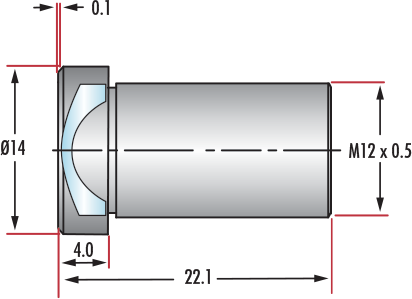
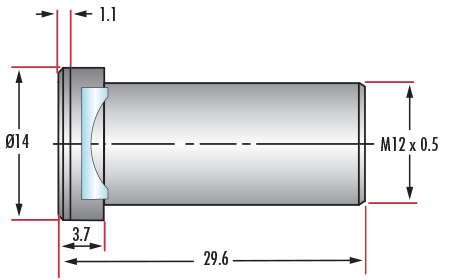
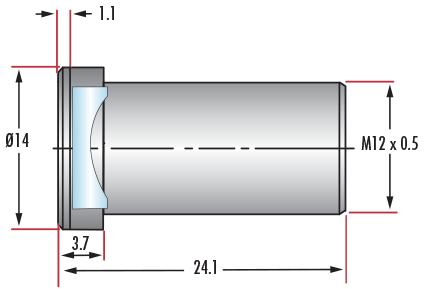
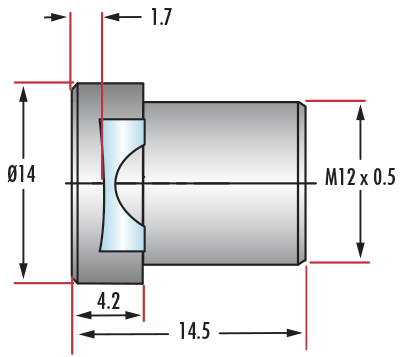
| Dimensions (mm) | ||||
| Focal Length | A | B | C | D |
| 3.6 | 14 | 14.6 | 4.5 | 4.2 |
| 4.4 | 14 | 24 | 6.4 | 3.8 |
| 6.4 | 14 | 30 | 10.2 | 3.8 |
| 7.2 | 14 | 22.1 | 8.3 | 4.0 |
| 8.0 | 14 | 15 | 8.7 | 4.0 |
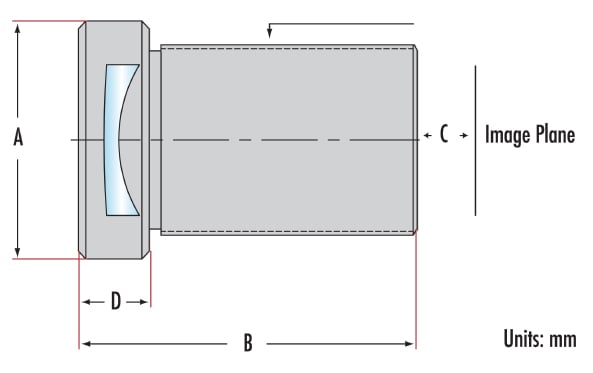 |
||||
ou consulter les numéros d’autres pays
facile à utiliser
entrer les numéros de stock pour commencer
Copyright 2023 | Edmund Optics, Ltd Unit 1, Opus Avenue, Nether Poppleton, York, YO26 6BL, UK
POLITIQUE DE CONFIDENTIALITÉ | POLITIQUE DE COOKIES | CONDITIONS GÉNÈRALES | CONDITIONS GÉNÈRALES B2C | MENTIONS LÉGALES | ACCESSIBILITÉ
L'entreprise Edmund Optics GmbH en Allemagne agit comme un mandataire d'Edmund Optics BV aux Pays-Bas.
Le titulaire du contrat est Edmund Optics BV aux Pays-Bas.
The FUTURE Depends On Optics®